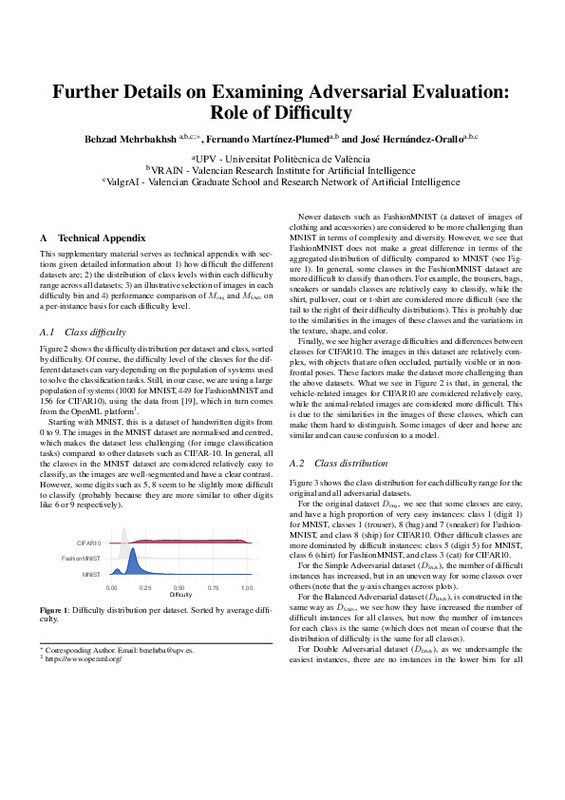JavaScript is disabled for your browser. Some features of this site may not work without it.
Buscar en RiuNet
Listar
Mi cuenta
Estadísticas
Ayuda RiuNet
Admin. UPV
Further Details on Examining Adversarial Evaluation: Role of Difficulty
Mostrar el registro completo del ítem
Mehrbakhsh, B.; Martínez-Plumed, F.; Hernández-Orallo, J. (2023). Further Details on Examining Adversarial Evaluation: Role of Difficulty. http://hdl.handle.net/10251/195689
Por favor, use este identificador para citar o enlazar este ítem: http://hdl.handle.net/10251/195689
Ficheros en el ítem
Metadatos del ítem
| Título: | Further Details on Examining Adversarial Evaluation: Role of Difficulty | |
| Autor: | Mehrbakhsh, Behzad Hernández-Orallo, José | |
| Entidad UPV: |
|
|
| Fecha difusión: |
|
|
| Resumen: |
Adversarial benchmark construction, where harder instances challenge new generations of AI systems, is becoming the norm. While this approach may lead to better machine learning models ---on average and for the new ...[+]
|
|
| Palabras clave: |
|
|
| Derechos de uso: | Reconocimiento (by) | |
| Código del Proyecto: |
|
|
| Agradecimientos: |
We thank the anonymous reviewers for their comments. This work was funded by valgrAI, the Norwegian Research Council grant 329745 Machine Teaching for Explainable AI, the Future of Life Institute, FLI, under grant RFP2-152, ...[+]
|
|
| Tipo: |
|







